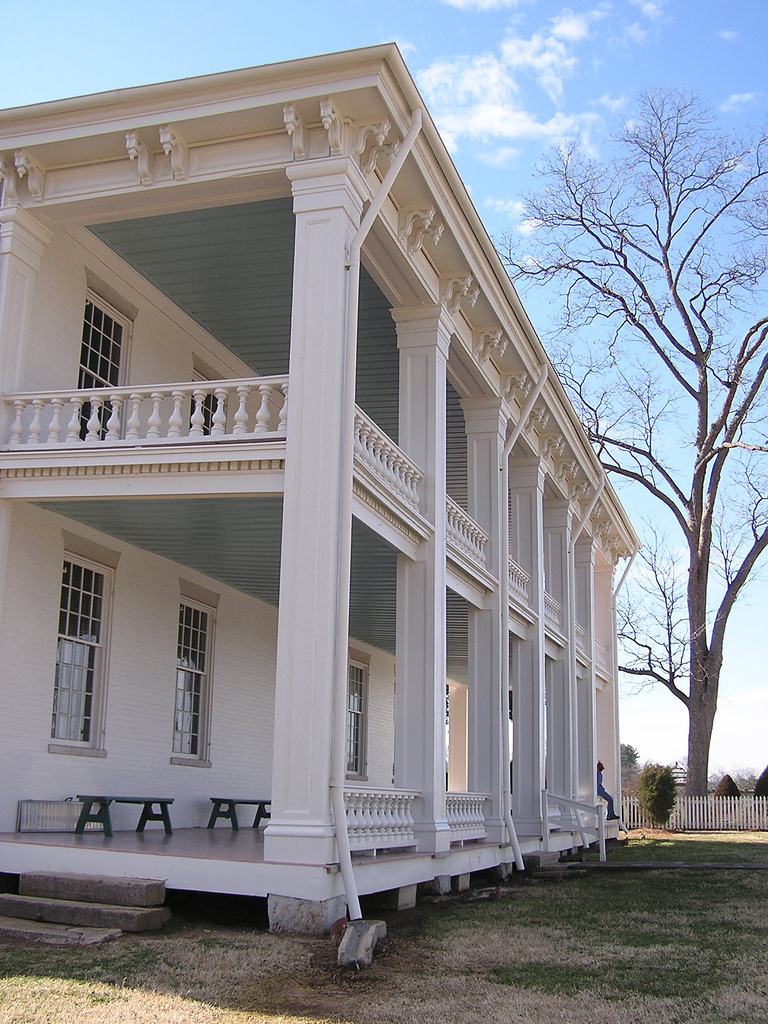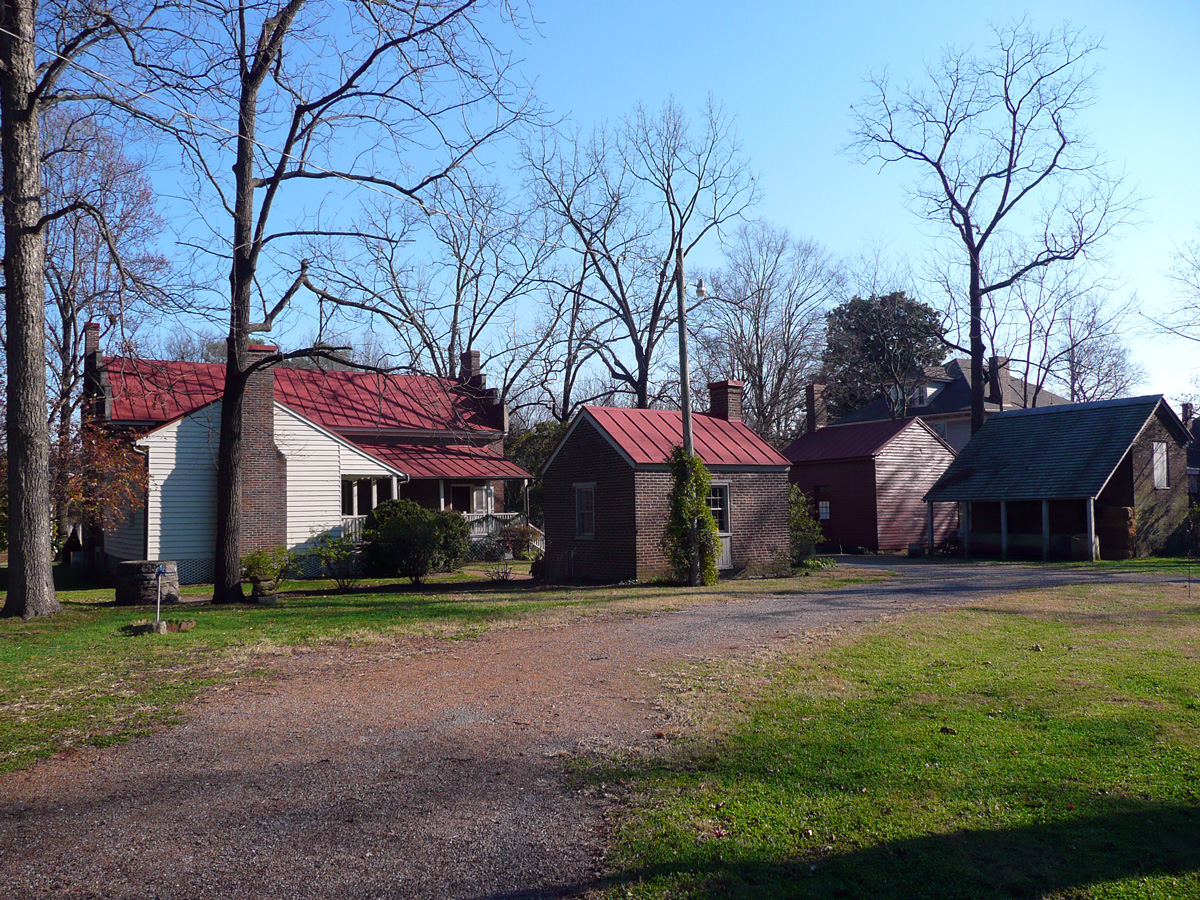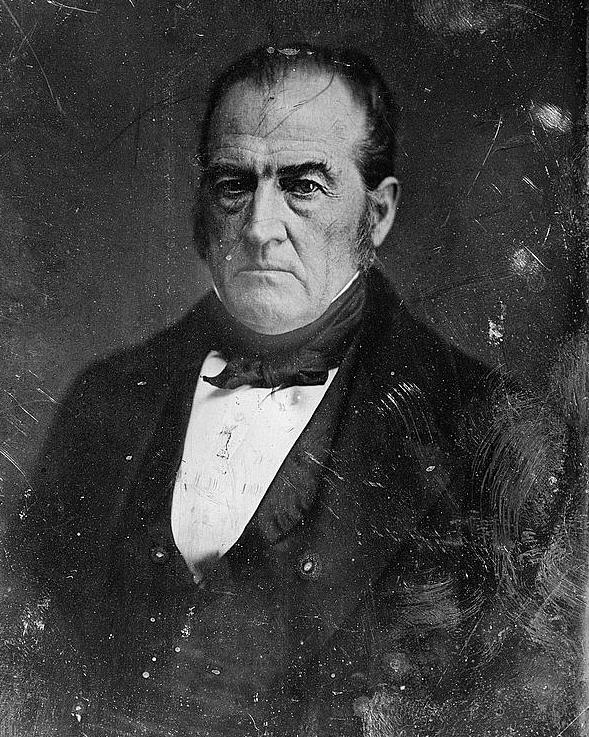|
Winstead Hill
Winstead Hill is a property in Franklin, Tennessee that has significance in 1864 for being in the Second Battle of Franklin battlefield. It is located within the Franklin Battlefield, a U.S. National Historic Landmark area. In the battle, Confederate troops under General Hood attacked from Winstead Hill. It was listed on the National Register of Historic Places in 1974. See also *Carnton, also NRHP-listed in the battlefield * Fountain Carter House, also NRHP-listed in the battlefield *Fort Granger Fort Granger was a Union fort built in 1862 in Franklin, Tennessee, Franklin, Tennessee, south of Nashville, after their forces occupied the state during the American Civil War. One of several fortifications constructed in the Franklin Battlefield ..., also NRHP-listed in the battlefield References Conflict sites on the National Register of Historic Places in Tennessee Franklin, Tennessee Geography of Williamson County, Tennessee Tennessee in the American Civil War National ... [...More Info...] [...Related Items...] OR: [Wikipedia] [Google] [Baidu] |
Franklin Battlefield
Franklin Battlefield was the site of the Second Battle of Franklin, which occurred late in the American Civil War. It is located in the southern part of Franklin, Tennessee, on U.S. 31. It was declared a National Historic Landmark in 1960. and The Carter House, which stands today and is open to visitors, was located at the center of the Union position. The site covers about . The house and outbuildings still show hundreds of bullet holes. Across the street from the Carter house, the Lotz House was similarly damaged, and the Lotz family huddled in the Carter House basement while the battle raged above. The Carnton Plantation, home to the McGavock family during the battle, also still stands and is likewise open to the public. Confederate soldiers swept past Carnton toward the left wing of the Union army, and the house and outbuildings were converted into the largest field hospital present after the battle. Adjacent to Carnton is the McGavock Confederate Cemetery, where 1,48 ... [...More Info...] [...Related Items...] OR: [Wikipedia] [Google] [Baidu] |
Franklin, Tennessee
Franklin is a city in and county seat of Williamson County, Tennessee, United States. About south of Nashville, it is one of the principal cities of the Nashville metropolitan area and Middle Tennessee. As of 2020, its population was 83,454. It is the seventh-largest city in Tennessee. The city developed on both sides of the Harpeth River, a tributary of the Cumberland River. In the 19th century, Franklin (as the county seat) was the trading and judicial center for primarily rural Williamson County and remained so well into the 20th century as the county remained rural and agricultural in nature. Since 1980, areas of northern Franklin have been developed for residential and related businesses, in addition to modern service industries. The population has increased rapidly as growth moved in all directions from the core. Despite recent growth and development, Franklin is noted for its many older buildings and neighborhoods, which are protected by city ordinances. History ... [...More Info...] [...Related Items...] OR: [Wikipedia] [Google] [Baidu] |
Second Battle Of Franklin
The Second Battle of Franklin was fought on November 30, 1864, in Franklin, Tennessee, as part of the Franklin–Nashville Campaign of the American Civil War. It was one of the worst disasters of the war for the Confederate States Army. Confederate Lieutenant General (CSA), Lt. Gen. John Bell Hood's Army of Tennessee conducted numerous frontal assaults against fortified positions occupied by the Union Army, Union forces under Major general (United States), Maj. Gen. John Schofield and was unable to prevent Schofield from executing a planned, orderly withdrawal to Nashville, Tennessee, Nashville. The Confederate assault of six infantry divisions containing eighteen brigades with 100 regiments numbering almost 20,000 men, sometimes called the "Pickett's Charge of the West", resulted in devastating losses to the men and the leadership of the Army of Tennessee—fourteen Confederate generals (six killed, seven wounded, and one captured) and 55 regimental commanders were casualties. ... [...More Info...] [...Related Items...] OR: [Wikipedia] [Google] [Baidu] |
National Historic Landmark
A National Historic Landmark (NHL) is a building, district, object, site, or structure that is officially recognized by the United States government for its outstanding historical significance. Only some 2,500 (~3%) of over 90,000 places listed on the country's National Register of Historic Places are recognized as National Historic Landmarks. A National Historic Landmark District may include contributing properties that are buildings, structures, sites or objects, and it may include non-contributing properties. Contributing properties may or may not also be separately listed. Creation of the program Prior to 1935, efforts to preserve cultural heritage of national importance were made by piecemeal efforts of the United States Congress. In 1935, Congress passed the Historic Sites Act, which authorized the Interior Secretary authority to formally record and organize historic properties, and to designate properties as having "national historical significance", and gave the Nation ... [...More Info...] [...Related Items...] OR: [Wikipedia] [Google] [Baidu] |
National Park Service
The National Park Service (NPS) is an agency of the United States federal government within the U.S. Department of the Interior that manages all national parks, most national monuments, and other natural, historical, and recreational properties with various title designations. The U.S. Congress created the agency on August 25, 1916, through the National Park Service Organic Act. It is headquartered in Washington, D.C., within the main headquarters of the Department of the Interior. The NPS employs approximately 20,000 people in 423 individual units covering over 85 million acres in all 50 states, the District of Columbia, and US territories. As of 2019, they had more than 279,000 volunteers. The agency is charged with a dual role of preserving the ecological and historical integrity of the places entrusted to its management while also making them available and accessible for public use and enjoyment. History Yellowstone National Park was created as the first national par ... [...More Info...] [...Related Items...] OR: [Wikipedia] [Google] [Baidu] |
National Register Of Historic Places
The National Register of Historic Places (NRHP) is the United States federal government's official list of districts, sites, buildings, structures and objects deemed worthy of preservation for their historical significance or "great artistic value". A property listed in the National Register, or located within a National Register Historic District, may qualify for tax incentives derived from the total value of expenses incurred in preserving the property. The passage of the National Historic Preservation Act (NHPA) in 1966 established the National Register and the process for adding properties to it. Of the more than one and a half million properties on the National Register, 95,000 are listed individually. The remainder are contributing resources within historic districts. For most of its history, the National Register has been administered by the National Park Service (NPS), an agency within the U.S. Department of the Interior. Its goals are to help property owners and inte ... [...More Info...] [...Related Items...] OR: [Wikipedia] [Google] [Baidu] |
Carnton
Carnton is a historic home and museum in Franklin, Williamson County, Tennessee, United States. The plantation played an important role during and immediately after the Battle of Franklin during the American Civil War. It is managed by the non-profit organization The Battle of Franklin Trust. Mansion and grounds Architecture Carnton is a red brick Federal-style 11-room residence, that was completed in 1826 by Randal McGavock using slave labor. Built on a raised limestone foundation, the southern facing entrance façade is a two-story, five-bay block with a side-facing gabled roof, covered in tin, with two dormer windows, and slightly projecting end chimneys. A central two-story pedimented portico in the Greek Revival-style was added in 1847 by McGavock's son John McGavock. The two-story portico contains four, square Ionic columns with beveled recessed panels, and a simple vase shape balustrade on each level. The balustrade encloses the second-story balcony. Decorative corbel ... [...More Info...] [...Related Items...] OR: [Wikipedia] [Google] [Baidu] |
Fountain Carter House
The Carter House State Historic Site is a historic house at 1140 Columbia Avenue in Franklin, Tennessee. In that house, the Carter family hid in the basement waiting for the second Battle of Franklin to end. It is a Tennessee Historical Commission State Historic Site, managed by the non-profit organization The Battle of Franklin Trust under an agreement with the Tennessee Historical Commission. The house is a contributing property and centerpiece of the Franklin Battlefield, a U.S. National Historic Landmark historic district. Fountain Branch Carter completed construction of the house in 1830. The federal style brick farm house was accompanied by several other outbuildings such as the farm office, smokehouse, and kitchen. In the 1850s, Carter built a cotton gin on his property that became a much-remembered landmark during the Second Battle of Franklin in 1864. Though the cotton gin no longer stands, the house and the other three buildings are still intact and illustrate the ... [...More Info...] [...Related Items...] OR: [Wikipedia] [Google] [Baidu] |
Fort Granger
Fort Granger was a Union fort built in 1862 in Franklin, Tennessee, Franklin, Tennessee, south of Nashville, after their forces occupied the state during the American Civil War. One of several fortifications constructed in the Franklin Battlefield, the fort was used by Union troops to defend their positions in Middle Tennessee against Confederate attackers. The Second Battle of Franklin in 1864, part of the Franklin-Nashville Campaign in the Western Theater of the American Civil War, Western Theater, was the most notable engagement of this area during the Civil War. Today, Fort Granger's remaining earthworks are preserved within a city park that is located near the center of Franklin. Fort Granger is listed on the National Register of Historic Places. The site is accessible to the public via a trail from Pinkerton Park. Its grounds include a boardwalk offering a view of the Harpeth River and extending through part of the fort's site. History As a fort Construction, early use After ... [...More Info...] [...Related Items...] OR: [Wikipedia] [Google] [Baidu] |
Conflict Sites On The National Register Of Historic Places In Tennessee
Conflict may refer to: Arts, entertainment, and media Films * ''Conflict'' (1921 film), an American silent film directed by Stuart Paton * ''Conflict'' (1936 film), an American boxing film starring John Wayne * ''Conflict'' (1937 film), a Swedish drama film directed by Per-Axel Branner * ''Conflict'' (1938 film), a French drama film directed by Léonide Moguy * ''Conflict'' (1945 film), an American suspense film starring Humphrey Bogart * ''Catholics: A Fable'' (1973 film), or ''The Conflict'', a film starring Martin Sheen * ''Judith'' (1966 film) or ''Conflict'', a film starring Sophia Loren * ''Samar'' (1999 film) or ''Conflict'', a 1999 Indian film by Shyam Benegal Games * ''Conflict'' (series), a 2002–2008 series of war games for the PS2, Xbox, and PC * ''Conflict'' (video game), a 1989 Nintendo Entertainment System war game * '' Conflict: Middle East Political Simulator'', a 1990 strategy computer game Literature and periodicals * ''Conflict'' (novel) ... [...More Info...] [...Related Items...] OR: [Wikipedia] [Google] [Baidu] |
Geography Of Williamson County, Tennessee
Geography (from Greek: , ''geographia''. Combination of Greek words ‘Geo’ (The Earth) and ‘Graphien’ (to describe), literally "earth description") is a field of science Science is a systematic endeavor that builds and organizes knowledge in the form of testable explanations and predictions about the universe. Science may be as old as the human species, and some of the earliest archeological evidence for ... devoted to the study of the lands, features, inhabitants, and phenomena of Earth. The first recorded use of the word γεωγραφία was as a title of a book by Greek scholar Eratosthenes (276–194 BC). Geography is an all-encompassing discipline that seeks an understanding of Earth and world, its human and natural complexities—not merely where objects are, but also how they have changed and come to be. While geography is specific to Earth, many concepts can be applied more broadly to other celestial bodies in the field of planetary science. O ... [...More Info...] [...Related Items...] OR: [Wikipedia] [Google] [Baidu] |
Tennessee In The American Civil War
The American Civil War made a huge impact on Tennessee, with large armies constantly destroying its rich farmland, and every county witnessing combat. It was a divided state, with the Eastern counties harboring pro-Union sentiment throughout the conflict, and it was the last state to officially secede from the Union, in protest of President Lincoln's April 15 Proclamation calling forth 75,000 members of state militias to suppress the rebellion. Although Tennessee provided a large number of troops for the Confederacy, it would also provide more soldiers for the Union Army than any other state within the Confederacy. In February 1862, some of the war's first serious fighting took place along the Tennessee and Cumberland rivers, recognized as major military highways, and mountain passes such as Cumberland Gap were keenly competed-for by both sides. The Battle of Shiloh and the fighting along the Mississippi brought glory to the little-known Ulysses S. Grant, while his area comm ... [...More Info...] [...Related Items...] OR: [Wikipedia] [Google] [Baidu] |







